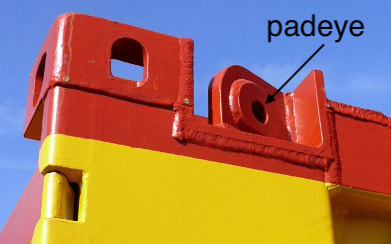Difference Between Onshore ISO and Offshore DNV Shipping ContainersIn order to meet the certification necessary for both safety and security, onshore and offshore containers need to be built properly with corresponding appropriate types of materials. Onshore and offshore shipping containers are just two of the different types of containers available today. There is a need to know that each container type has its specific uses so that you can decide the most appropriate one for your project needs. A shipping container is a vehicle used to hold out cargos for storage and safekeeping.
Onshore ISO Shipping Containers Most of the ISO shipping containers sometimes also known as sea containers are made from the weathering steel as what is specified within the BS EN 100025-5: 2004 commonly called as the “Cor-ten” steel, This is a type of steel that is corrosion resistant mainly utilized within different industries in which exposed steel sections are needed such as building sculptures, facades, and panels. Used shipping containers for sale are widely available in order to cater the growing needs of the industry. Onshore ISO shipping containers are containers that passed through the standards of the International Standards Organization. This sort of container is also referred to as “intermodal”. The intermodal or ISO shipping container originated or rooted to develop the DNV offshore containers. It is the reusable transport and storage of goods between locations at a low cost. There are great numbers of companies that offer cheap shipping containers for sale that the industry can choose from. Components and Characteristics of Onshore ISO Shipping Containers
Offshore DNV Shipping Containers Offshore container as defined by the International Maritime Organization, it is a “portable unit, specially designed for repeated use in the transport of goods or equipment to, from or between fixed and/or floating offshore installations and ships.” It is also refer to as portable tanks for dangerous goods. Hence, it holds oils, gases and other hazards that need transport from one place to another. What makes Offshore Containers Different from Onshore Containers?
Offshore DNV shipping containers are containers manufactured that passed through dnv2.7-1 certifications. These containers are often left expose and loaded in harsh weather conditions. It normally specifies with a standard temperature of -20 degrees Celsius and requires primary structures and materials with sufficient strength and sturdiness with its standard temperature. The loading and unloading methods put different types of pressure on the structure of the containers. |
Archives
July 2024
Categories
All
|
- Home
-
Containerised solutions
- Intelligent pressurised container | MUD logging cabin
- Battery energy storage system (BESS) container
- Flexible grid tied battery storage system
- Laboratory container | workshop container | Equipment containers
- Temporary refuge shelter | Toxic gas refuge | Safe haven
- Offshore accommodation cabin | office container
- Reefer container | Refrigerated container
- Intelligent waste water treatment container
- Fresh water generator container
- Cargo Containers
- Product photos & videos
- News & Blogs
- Contact us
|
Featured products
Intelligent pressurised container Temporary refuge (TR) shelter, toxic gas refuge (TGR) Battery energy storage system (BESS) container Containerised waste water treatment plant Fresh water generator container Reefer container Laboratory container, Workshop container Accommodation container Offshore closed container |
All Rights Reserved 2020 © TLS Offshore Containers / TLS Energy
|

